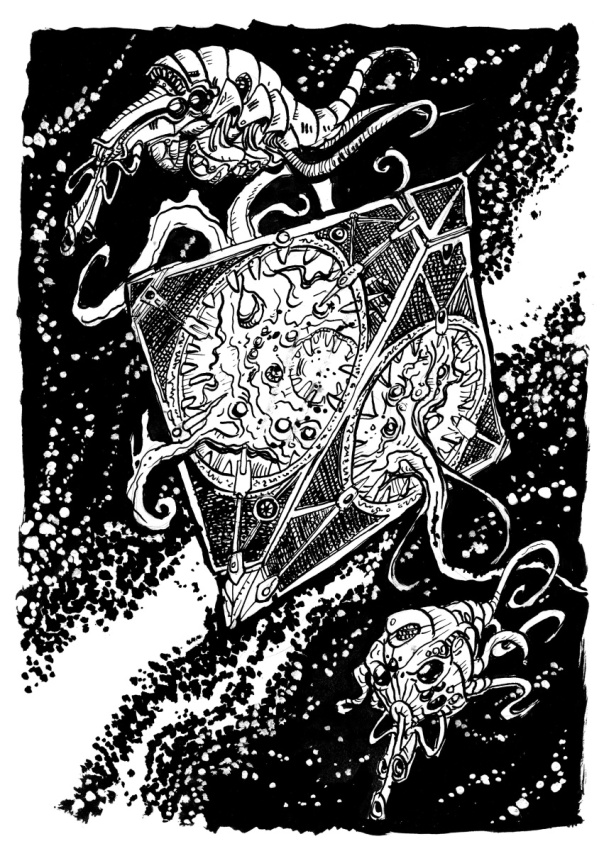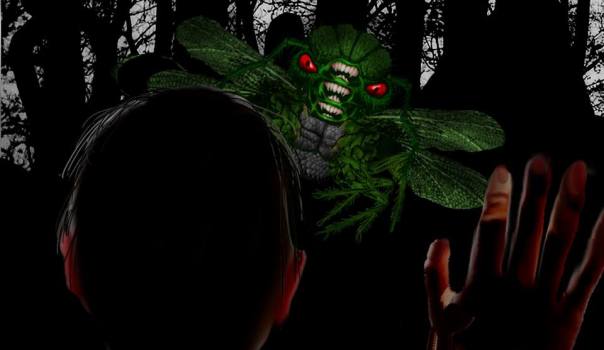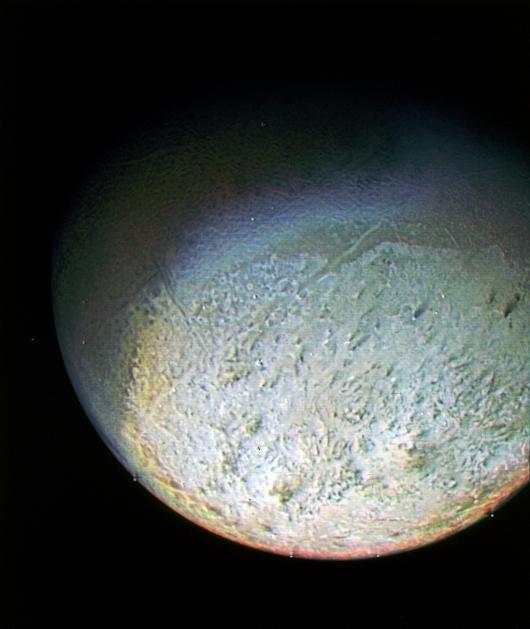This is Part 2 of a two-part discussion on the interstellar and inter-dimensional travels of the Insects from Shaggai, as documented by Mr. Ramsey Campbell. This article focuses on the Insect’s experiences within our solar system. In the previous article we described that as a result of their world being destroyed, most likely by Ghroth, a small population of the Insects used one of their inter-dimensional temples to travel to various other worlds. Eventually they entered our Universe and settle down onto a large icy giant of a world on the outer rim of our solar system, known to its endemic inhabitants as L’gy’hx. To us this world is known as Uranus. As I have mentioned in past articles, while H.P. Lovecraft has written about Uranus several times in his articles on astronomy, this is the only world he has not referenced in any of his fiction. Fortunately for us, Mr. Campbell has had an opportunity to document the arrival of the Insects to L’gy’hx and how this impacted the residents of that world. But first, let’s review what is currently known about L’gy’hx.
 An inhabitant of L’gy’hx by Jok18 (www.deviantart.com)
An inhabitant of L’gy’hx by Jok18 (www.deviantart.com)
L’gy’hx (again, known to Terrans as Uranus) is approximately 1.8 billion miles from the sun with an atmosphere mainly composed of hydrogen and helium. However, L’gy’hx has more methane than Jupiter and Saturn, which gives it the observed light blue tint. The darker and rich blue of Neptune is a result of that planet having higher concentrations of methane since this simple organic molecule is known to absorb red light and reflect blue light back into space. This is why methane is a “stronger” greenhouse gas; it is so much more efficient at trapping infrared radiation (heat). For example, over a five-year period methane traps up to 100 times more heat in the atmosphere than carbon dioxide. However, in addition to methane being relatively “short-lived” in our atmosphere, it only accounts for 9% of the total of greenhouse gas emissions, while carbon dioxide accounts for 82% of all anthropogenic greenhouse gas emissions.
 L’gy’hx, (known to us as Uranus (www.nasa.gov)
L’gy’hx, (known to us as Uranus (www.nasa.gov)
A majority of L’gy’hx’s mass is composed of a hot, dense fluid of “icy” materials including water, methane and ammonia, surrounding a small rocky core. The planet has 13 rings and at least 27 moons. As previously mentioned, what makes L’gy’hx unique in our solar system is that it is the only planet that rotates horizontally on its axis. As has been hypothesized this unusual axis of rotation is the result of a collision with some type of large object. An alternative hypothesis is the that Shaggai’s inter-dimensional temple ship crashed into our Universe, hitting L’gy’hx with such a high amount of pan-dimensional energy that it resulted in the planet’s now observed horizontal tilt.

As previously mentioned, the inhabitants of L’gy’hx were a relatively peaceful species of cuboid many-legged metal beings and were initially content in the co-habitation of their world with the Insects from Shaggai. However, conflict did eventually break out between these two species, largely due to religious differences. The Insects from Shaggai worshiped Azathoth while the inhabitants of L’gy’hx worshiped a strange bat-like god called Lrogg, which is actually hypothesized to be another variation of Nyarlathotep.
 Lrogg by Michael Bukowski (www.yog-blogsoth.blogspot.com)
Lrogg by Michael Bukowski (www.yog-blogsoth.blogspot.com)
Since L’gy’hx is known to have a small, solid core made of iron and nickel, these metals be the material that the cuboid entities are made of; thus, the biochemistry of the inhabitants of L’gy’hx may be based on iron or nickel, with carbon being an important constituent the way nitrogen and phosphorus are important to life on Earth. Above the hot solid core is an “ice mantle” that is composed of a hot and very dense mixture of fluids such as liquid ammonia, water and liquid methane. The incredible high pressures and temperature in the mantle and above the solid core may also allow for stable forms of liquid metal, which in turn may have given rise to a sentient form of liquid metal. Such replicating forms of liquid metal may produce crystalline shapes (like dendrites) if the temperature and pressure allows for some stable fluctuations between the liquid and solid states of metal, giving the inhabitants a simple cuboid body plan. Additionally, this life may not exist on the surface of the small solid core but instead in the ice mantle where various liquids are layered on one another based on temperature and pressure. Thus, while life may exist on L’gy’hx it may be very different than it is on Earth. Obviously more research is required on the L’gy’hx ecosystems.
 An internal view of L’gy’hx (www.newtonsapple.org.uk)
An internal view of L’gy’hx (www.newtonsapple.org.uk)
In any event, over time a conflict developed between the two species when some of the inhabitants of L’gy’hx began to worship Azathoth and some of the Insects of Shaggai started worshiping Lrogg. After a few violent altercations approximately 30 Insects of Shaggai left L’gy’hx in their newly re-constructed inter-dimensional temple and headed to the third world from the L’gy’hx system’s star. Unlike the large gas giants, there small little, rocky worldlets huddle close to that system’s star and the third one is called by its residents – Earth.
 Ships of the Shaggai by Clone Artist (www.deviantart.com)
Ships of the Shaggai by Clone Artist (www.deviantart.com)
For whatever reason when the temple re-materialized on Earth, it did not appear entirely “on” the Earth. Only the upper 30 feet of the temple materialized above the surface of the Earth in a place called Goatswood, which is a village in the United Kingdom’s Severn Valley, southwest of Brichester (The Encyclopedia Cthulhiana, 2nd Edition, by Daniel Harms, 1998). Fortunately, the temple re-materialized in a wooded area; however as documented by Ramsey Campbell interactions or encounters between the Insects and humans, while rare, do occur from time to time.
The Insects appear to live in the upper sections of the temple (the 30 feet portion of the temple above ground). In contrast their Xiclotlian slaves occupy the middle section of the temple, while the lower 40-foot portion of the temple is used for worshiping Azathoth. However, even the Insects of Shaggai were fearful to enter the lowest most chambers. Whatever thing is behind that final door in the bottom of the temple must be some residual force or entity from the Insect’s native Universe. It is the multi-dimensional gate in the bottom of the temple that keeps this thing trapped. Thus, while the Insects from Shaggai plot their total domination of the Earth, envisioning enslaving humans the way they enslaved the Xiclotlians, they are still fearful of the day when the multi-dimensional gate breakdown and the thing from their Universe emerges into ours.
 Insects from Shaggai by Herb Arnold
Insects from Shaggai by Herb Arnold
Next up some additional articles based on NASA’s study of Yuggoth as well as the initiation of a discussion on Lovecraft’s “The Lurking Fear.” Thank you – Fred.












